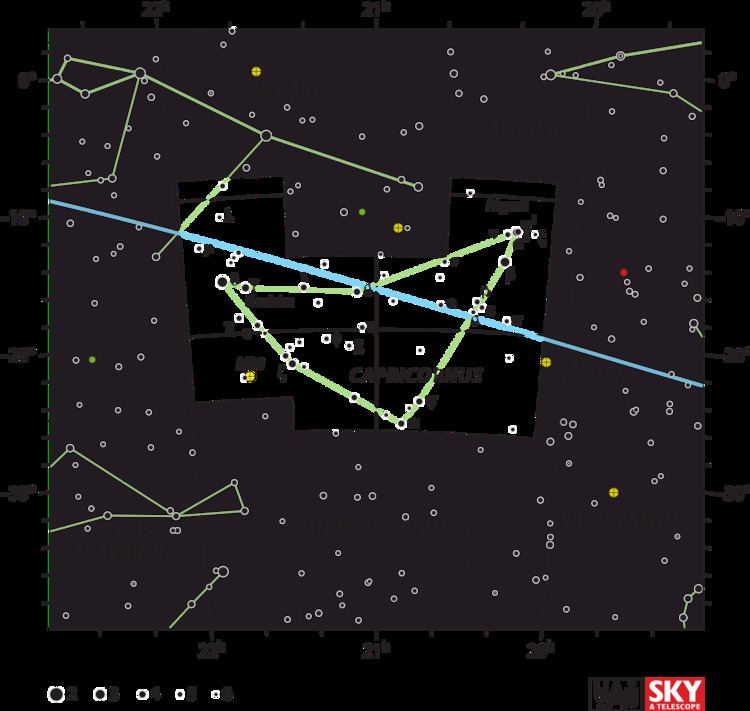ARICNS data | Magnitude 5.73 Apparent magnitude (V) 5.73 | |
 | ||
Similar 82 G Eridani, Psi Capricorni, Zeta Tucanae, HD 85512, 61 Virginis | ||
HR 7722 (also known as 5 G. Capricorni or Gliese 785) is a star in the southern constellation of Capricornus. It is located in the solar neighborhood at a distance of just over 29 light years, and is within the range of luminosity needed to be viewed from the Earth with the unaided eye. (According to the Bortle scale, it can be viewed from dark suburban skies.) HR 7722 is suspected of being a variable star, but this is unconfirmed.
This is a K-type main sequence star with a stellar classification of K2+ V. HR 7722 has about 78% of the Sun's mass and, depending on the estimation method, 79% to 85% of the radius of the Sun. The effective temperature of the photosphere is about 5069 K, giving it the orange-hued glow of a K-type star. It is older than the Sun, with age estimates in the range 7.5–8.9 billion years. The proportion of elements other than hydrogen and helium, known as the metallicity, is similar to that of the Sun. It is spinning slowly, completing a rotation roughly every 48 days.
The space velocity components of this star are (U, V, W) = (–69, –13, –14) km/s. It is following an orbit through the Milky Way galaxy that has an orbital eccentricity of 0.18 at a mean galactocentric distance of 8.1 kpc. The star will achieve perihelion in around 82,200 years when it comes within 20.18 ly (6.188 pc) of the Sun.
Planetary system
The system has a Neptune-mass planet "b", discovered in 2010. A second planet "c" was found in this system in 2011 by the HARPS GTO program, along with HD 85512 b and the planets of 82 G. Eridani. The uncertainty in the mass of the second planet is much higher than for the first because of the lack of coverage around the full orbit. Both planets may be similar in composition to Neptune. They are orbiting along the inner and outer edges of the habitable zone for this star.
